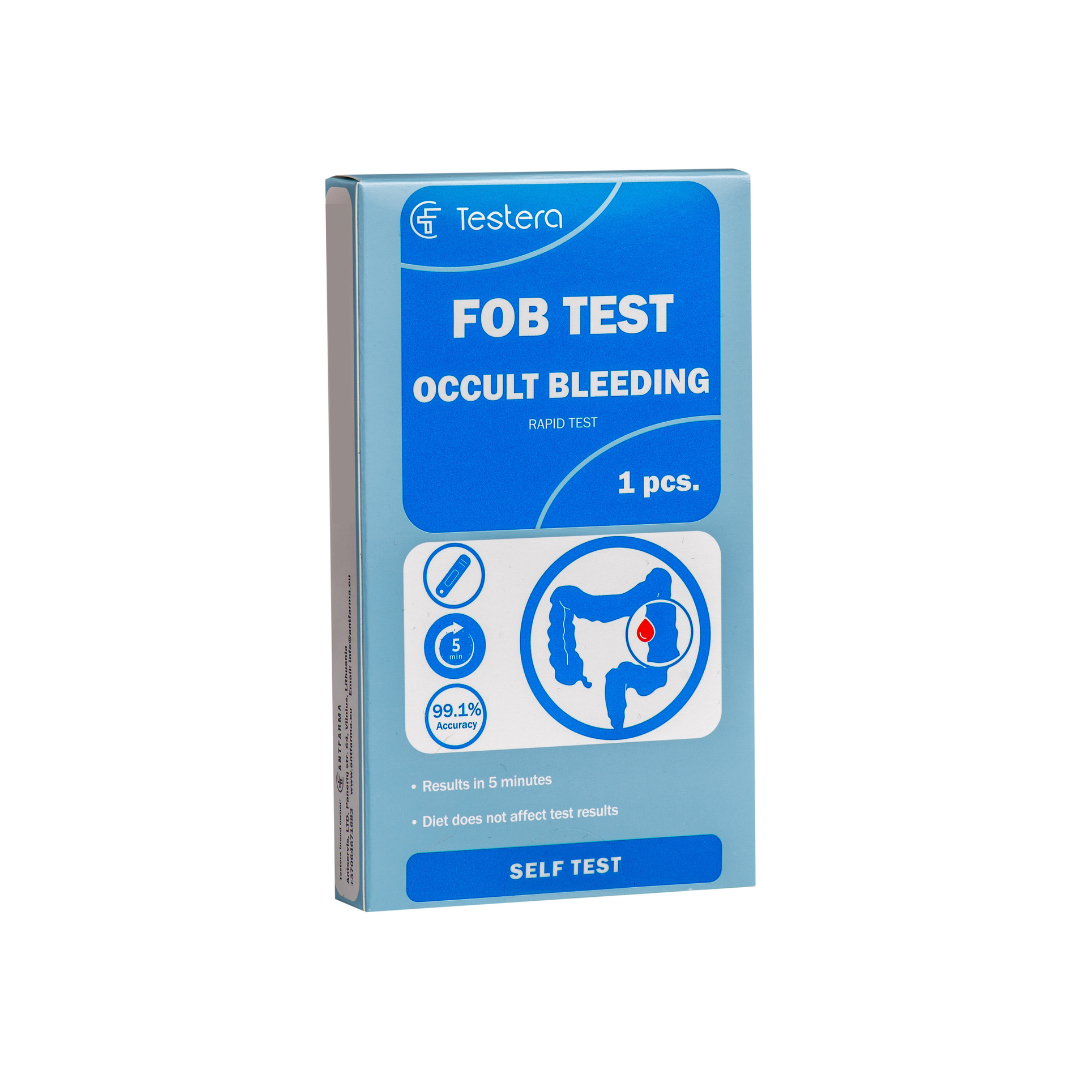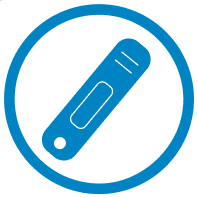Home / Testera tests / FOB test (to detect occult bleeding)

FOB test (to detect occult bleeding)
The test is designed to diagnose colorectal cancer and to detect hidden bleeding in stool. Fecal Occult Blood (FOB) is a small, hidden amount of blood in the stool that can be an indicator of gastrointestinal bleeding or other health problems.

Accuracy 99,1 %
Sensitivity - 98.4 %
Specificity - 93,3 %

Results in 5 minutes

Sample - faeces
- Test cassette
- Faecal trap
- Package leaflet
- Tube collection tube with extraction buffer.
Allow the sample and buffer to cool to room temperature before performing the test
temperature (15-30 °C).
- How to take a stool sample. The faecal sample must be collected in a faecal trap. The faecal trap must
for use regardless of the type of toilet, as it helps to protect the sample from contamination by chemicals and impurities. - How to process a stool sample. Unscrew the cap of the sample collection tube,then insert the sample
a collection applicator in at least 3 different places on the stool sample. Do not hang the faecal sample. Place the cap on the sample collection tube and screw it on tightly, then shake the sample collection tube vigorously until the sample mixes with the extraction buffer. - Keep the bag at room temperature before opening it. Remove the test cartridge from the sealed bag and use as soon as possible. The best results are obtained if the test is carried out immediately after opening the foil bag.
- Hold the sample collection tube upright and open the sample collection tube cover. Invert the sample collection tube and drop 2 full drops of the extracted sample (approx. 80 μL) onto the sample well (S) in the test cartridge and start the timer. Be careful to avoid air bubbles in the sample well (S). See illustration below.
- Check the results after 5 minutes. After 10 min, do not check the result again.
| Positive* | Two coloured lines appear. One coloured line should appear in the control area (C) and the other in the test area (T).
*NOTE: The intensity of the colour in the test line area (T) will vary depending on the concentration of blood in the sample. Therefore, any shade in the test line area (T) should be considered a positive result. |
| Negative | A single coloured line appears in the control area (C). No line is visible in the test line area (T). |
| Not valid | The control line does not appear. The most likely reasons for the non-appearance of the reference line are insufficient sample quantity or an incorrect procedure. Revise the procedure and repeat the test using a new test. If the problem persists, stop using the test kit and contact your local distributor. |
Informative video
Instruction leaflet
You can buy this test:




















